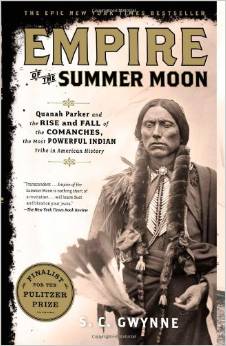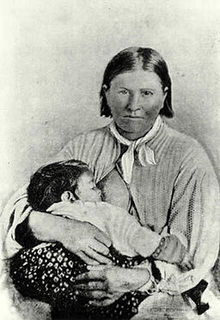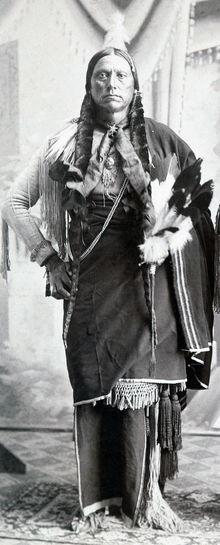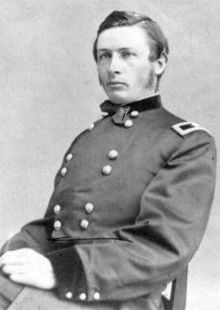 Just finished reading an excellent book called Empire of the Summer Moon – Quanah Parker and the Rise and Fall of the Comanches, the Most Powerful Indian Tribe in American History by S.C. Gwynne.
Just finished reading an excellent book called Empire of the Summer Moon – Quanah Parker and the Rise and Fall of the Comanches, the Most Powerful Indian Tribe in American History by S.C. Gwynne.
From what is now extreme southeast Colorado all the way to the hill country of central Texas, the Comanches controlled, often with a cruel hand, a vast amount of territory in the southern Great Plains. In fact, so strong was their hold on this land, that it was referred to by Texans and Mexicans as if it were its own nation – Comancheria. The book follows a number of major players in this area during the later half of the 19th Century, and begins with the abduction of a white family in the 1830s from an area near Fort Worth, which was at the time, deep in Comancheria. Most of the family members were killed, some brutally, but one small girl, who was just eight at the time of the abduction, was spared. Her name was Cynthia Ann Parker. Cynthia eventually learns to become a part of the tribe. She marries a tribal leader and bears two children, one of whom would become Quanah Parker, the last great leader of the Comanche people.

Cynthia’s story alone is fascinating. She is eventually found, and is forced to return to the white man’s world, but having grown up Comanche, she never assimilates culturally, and remains a steadfast Comanche woman to the end of her days, which were tragically short following her return to white culture. The story of her son, Quanah, is no less fascinating.
Quanah, who was only 12 when his mother was captured by the U.S. Cavalry, grows up to become the most respected and feared warrior in all of Comancheria. He leads many raids and gathers a huge following, but when he realizes the game is up in the 1880s, he is somehow able to drop his Comanche culture, and becomes a powerful, wealthy land owner, and a full participant in the culture of those he fought so hard in his younger days.

“If, as F. Scott Fitzgerald suggested in the early twentieth century, there are no second acts in American lives, then Quanah was the exception to the rule. While his mother chose not to fit into the world from which she was taken as a child, Quanah would take the white man’s road. He would leave the glories of the free life on the plains behind.”

The book also follows the career of General Ranald Slidell Mackenzie who was probably the most successful Indian fighter in the West of the 1800s. He fearlessly tracks Quanah’s band of warriors, and is eventually the one who gets Quanah to surrender. Although he was far more successful than his contemporary George Armstrong Custer, he is far less famous. He even plays a role in cleaning up the mess that Custer left on his “last stand” at Little Bighorn.
I could go on, but if you’ve read this far, you should really read the book. It’s truly excellent, and is just one more example of the amazing history that can be found all throughout the Great Plains.
As I often say, if you want to learn American History, there are two places you should go: Boston and the Great Plains!


One Response
Highly recommend this book. Very well written.